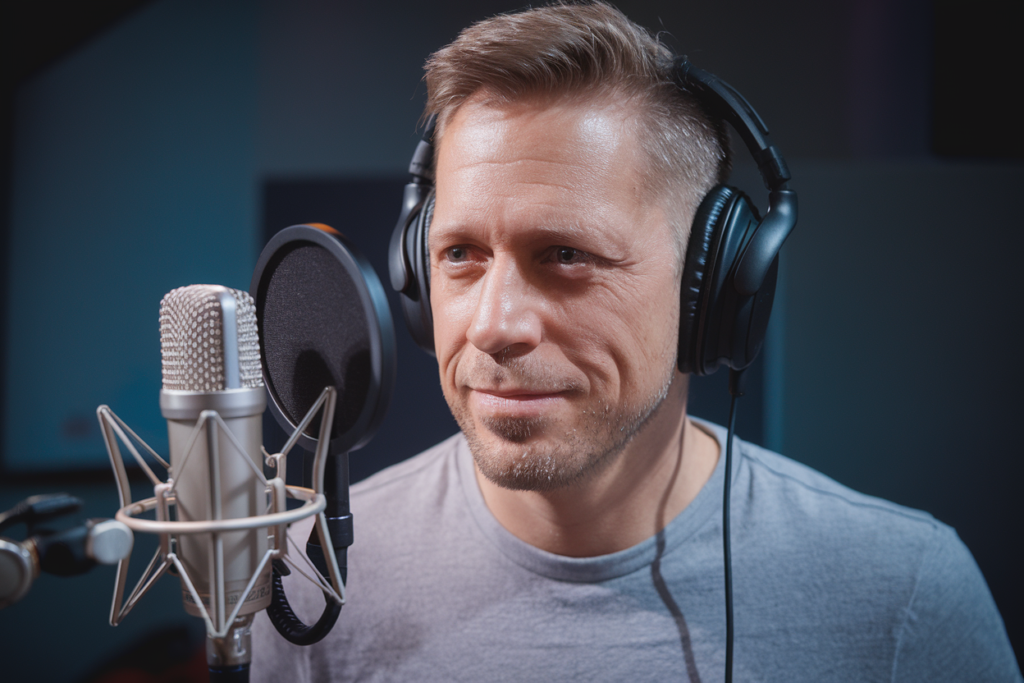Key Takeaways
- Importance of Accent Selection: Choosing the right German accent is crucial for audience connection, as different accents carry distinct cultural meanings and emotional undertones.
- Cultural Nuances Matter: Understanding regional variations in accents helps create authenticity; for example, a Bavarian accent evokes warmth, while a Berliner accent suggests modernity.
- Audience Engagement: An authentic voiceover enhances relatability and fosters trust, making viewers more receptive to your content and brand message.
- Contextual Relevance: Tailoring the chosen accent to fit the context of your content ensures effective communication—neutral accents may be best for educational materials, while specific accents can enhance storytelling.
- Collaboration with Native Speakers: Involving native speakers in the localization process enriches content through their insights into local customs and idiomatic expressions.
- Leveraging Technology: Utilizing AI-driven tools and online platforms simplifies accent selection by allowing you to analyze listener preferences and sample diverse voice artists before finalizing your choice.
Ever wondered how a German accent can transform your media localization project? Choosing the right accent isn’t just about sound; it’s about connecting with your audience in a way that feels authentic. The German-speaking world is diverse, with various regional accents that can evoke different emotions and cultural nuances.
Understanding Media Localization
Media localization involves adapting content to fit the cultural and linguistic preferences of a target audience. This process goes beyond simple translation; it includes modifications in tone, style, and even visual elements. When localizing media for German-speaking audiences, selecting the right accent is essential. Different accents can evoke distinct emotions and resonate differently with viewers.
Accent choice impacts your project’s success significantly. For instance, a Bavarian accent may convey warmth and tradition, while a Berliner accent might suggest modernity and urban flair. Each regional voice brings its own character to the narration, enhancing the viewer’s engagement.
When you consider voice talent for your project, think about how their performance aligns with your brand message. A skilled voice artist not only delivers lines effectively but also embodies the cultural nuances specific to that accent. You’ll want someone who understands these subtleties and can bring authenticity to your localized content.
Selecting a voice over actor with expertise in German accents ensures that your message reaches your audience clearly and effectively. Their ability to navigate regional dialects allows for better connection with viewers across different areas of Germany or other German-speaking regions like Austria or Switzerland.
Incorporating native speakers into your projects enriches the overall experience. Native voiceover artists provide insights into colloquialisms and idiomatic expressions that non-native speakers might miss. This depth adds an extra layer of relatability and familiarity for audiences.
Ultimately, understanding media localization means recognizing its role in effective communication. The choice of voiceover talent directly influences how well your message resonates in the target market, making it crucial to invest time in this selection process.
Importance of German Accents in Media
Choosing the right German accent for media localization is key to connecting with your audience. Different accents carry distinct cultural meanings and emotional undertones, making them crucial for effective communication.
Cultural Nuances
Cultural nuances shape how audiences perceive content. Each German region has its own accent that reflects local customs and traditions. A Bavarian accent might evoke warmth and a sense of heritage, while a Berliner accent conveys modernity and urban sophistication. Understanding these subtleties helps you select voice talent that resonates with your target demographic, ensuring authenticity in your message.
Audience Engagement
Engaging your audience hinges on relatability. An appropriate German accent enhances engagement by creating familiarity. When viewers hear an authentic voice over actor delivering lines in their local dialect, they feel more connected to the content. This connection fosters trust and increases the likelihood of positive reception towards your brand or project—leading to greater impact in the competitive landscape of media localization.
Factors to Consider When Choosing German Accents
Choosing the right German accent for your project involves several key factors that directly influence audience connection and engagement.
Regional Variations
German accents vary significantly across regions, each carrying unique characteristics and cultural undertones. For instance, a Bavarian accent may evoke warmth and tradition, making it suitable for projects focusing on heritage or local charm. Conversely, a Berliner accent represents modernity and urban flair—ideal for contemporary topics or products targeting younger demographics. Understanding these regional variations allows you to select voice talent that resonates with your audience’s expectations and emotional responses.
Context of the Content
The context in which your content will be presented plays a crucial role in determining the appropriate German accent. If you’re localizing educational materials, a neutral accent might provide clarity and accessibility for learners. However, if your media focuses on entertainment or storytelling, choosing an accent that aligns with characters’ backgrounds can enhance authenticity. Tailoring accents to fit specific contexts ensures that the message comes across effectively while maintaining cultural relevance.
Selecting the right voiceover artist isn’t just about sound; it’s about creating an authentic connection through language and culture. By considering regional variations and content context, you can make informed decisions that elevate your project’s impact in the German-speaking market.
Tips for Effective Localization
Effective localization hinges on several key strategies that enhance audience connection and engagement. Focus on these tips to optimize your media projects.
Collaborating with Native Speakers
Collaborating with native speakers offers invaluable insights into cultural nuances. These individuals bring an authentic touch to your project, ensuring the voiceover resonates with the target audience. They can help identify idiomatic expressions and local references that elevate relatability. When selecting voice talent, prioritize those fluent in regional accents, as their performances embody the subtleties of language specific to a locale, fostering trust and familiarity.
Utilizing Technology in Accent Selection
Utilizing technology can streamline your accent selection process. Tools like AI-driven voice analysis software provide data on how different accents affect listener perception. You can test various options against demographic preferences or emotional responses before finalizing decisions. Additionally, online platforms allow you to sample diverse voice artists and their unique styles in real-time. This tech-savvy approach ensures you choose the right voice actor who aligns with your project’s tone while appealing directly to your audience’s cultural context.
Conclusion
Choosing the right German accent for your media localization project is vital for creating a genuine connection with your audience. It’s not just about sound; it’s about conveying emotion and culture effectively. By understanding regional accents and their unique characteristics, you can enhance engagement and foster trust.
Collaborating with native speakers ensures that your content resonates on a deeper level. Don’t underestimate the importance of voice talent who are not only fluent but also familiar with cultural nuances. This investment in quality localization will pay off by elevating your brand’s message and improving audience reception.
Ultimately, selecting an appropriate German accent enriches your project, making it more relatable and impactful. Prioritize this aspect to maximize effectiveness in reaching your target market successfully.
Frequently Asked Questions
Why is selecting the right German accent important for media localization?
Choosing the appropriate German accent is crucial because it helps establish an authentic connection with the audience. Different accents convey various emotions and cultural nuances, influencing how the content is received.
How do regional accents affect audience perception in Germany?
Regional accents reflect local customs and traditions, shaping audience expectations and emotional responses. For example, a Bavarian accent may evoke warmth, while a Berliner accent suggests modernity, impacting engagement levels.
What role does voice talent play in effective media localization?
Voice talent should align with the brand message and possess expertise in specific German accents. Native speakers provide valuable insights into colloquialisms, making content relatable and enhancing communication effectiveness.
Can technology assist in selecting the right German accent for projects?
Yes, AI-driven voice analysis software can help assess how different accents influence listener perception. It enables sampling diverse voice artists in real-time to find the best fit for your project.
What key factors should be considered when choosing a German accent?
Consider regional variations, context of content, and audience preferences. A neutral accent might work for educational materials, while a specific one could enhance authenticity in entertainment contexts.







